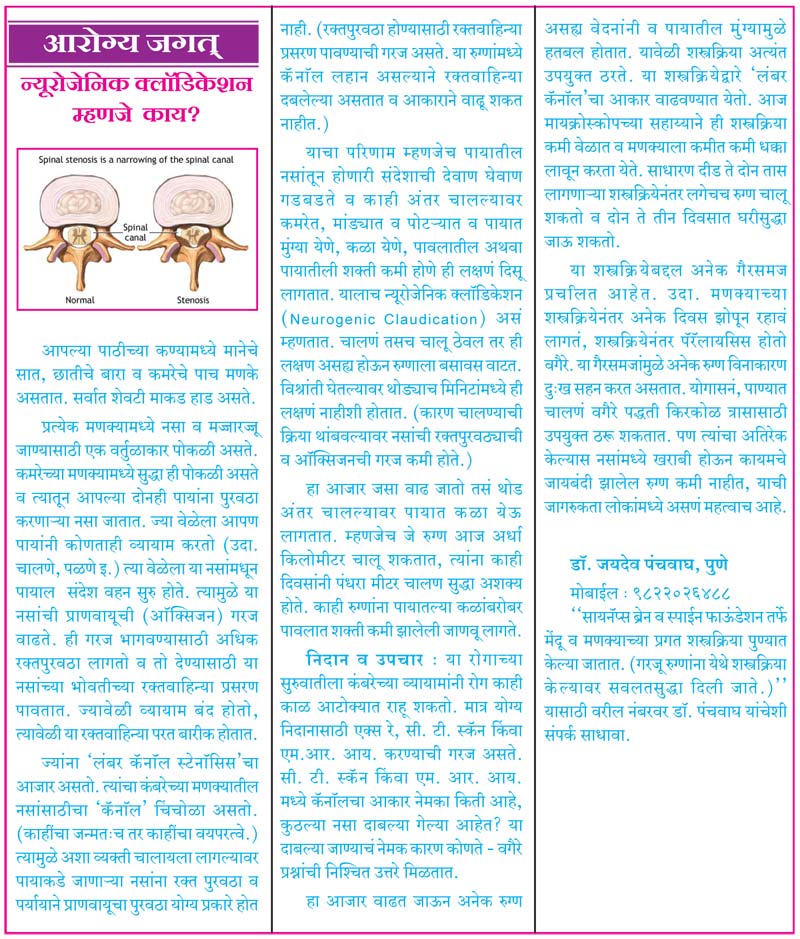
What is Neurogenic Claudication?
Our Spine is mainly made up of seven cervical vertebrae, twelve thoracic vertebrae, five lumbar vertebrae etc. The spinal cord lies within the canal that is at the centre of these vertebrae. The spinal cord gives rise to many spinal nerves that exit this central portion through many openings (foramina) in the spinal bones or vertebrae. If the space in the central portion of the bones is narrowed, it can lead to compression of either the spinal cord or the nerves that exit from it. The narrowing could be caused by degeneration of the bones at one or more levels, or because of disc prolapse.
This narrowing of the central portion of the vertebral column or spinal column in the lumbar area (waist area) is called Lumbar Canal stenosis. This leads to decreased electrical traffic in the nerves that go toward and away from the spinal cord. The symptoms of lumbar canal stenosis are tingling and numbness in one or both thighs, legs or feet, decreased sensation, inability to walk more than a few hundred metres etc.
Typically, the symptoms are relieved after resting for a few minutes. This is called neurogenic claudication. As the stenosis and compression worsen, the distance that he/ she can walk decreases and the patient may want to give up walking completely.
Treatment for Neurogenic Claudication:
Initially exercises may relieve the symptoms, but as the stenosis or narrowing progresses the symptoms do not respond. X-rays, CT Scan, MRI etc are necessary to find out the exact site of compression and to plan surgery. Microscopic Lumbar Decompression is a good treatment option for this disease. This is generally done under General anaesthesia. The patient can begin walking within a few hours of surgery.
Myths about Spine surgery:
One would be surprised at the variety of wrong information in circulation about spine surgery. ‘One will remain confined to bed’, ‘paralysis of the legs can occur’, ‘back pain after operation’, ‘need to sleep in prone position only’ etc are some of the wrong information and myths that surround spine operations!!
While exercises and walking in water may help only a few people if the compression is mild, generally it is not useful in most. Surgery is necessary and relieves most symptoms. It is important for the patients to realise when they should opt for spine surgery.
Leave a reply
Sir ???? L5 S1 ?????? 2011 la ???? ??? ??? ??? ?? ????? ??? ???? ???? ??? ???? ?? ??? ??? ????? ???? ????? ???
Replyi have osteophytes on c 4/5 and 6/7. which is causing stenosis and massive sleep disturbance and end up with lack of focus. no pian really, osteophytes can damage the spinal cord ongoing eventually.
Reply